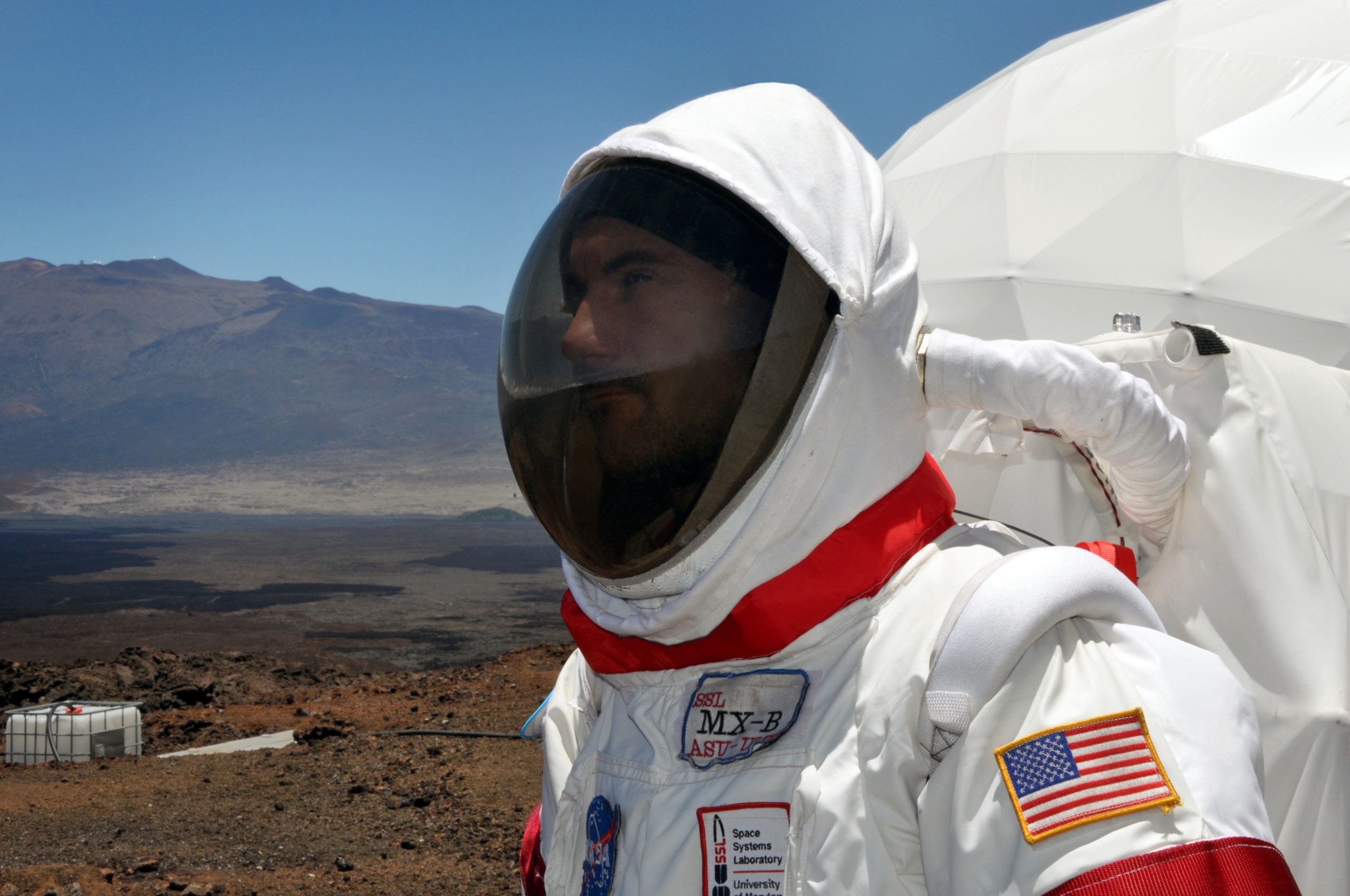TPM researcher Angelo Vermeulen wants astronauts to make their own meals on long distance space flights. He was the crew commander of a four-month NASA experiment on Hawaii.
Seafood chowder, salmon patties and enchilagna (a combination of enchiladas and lasagne). When Vermeulen mentions his favourite meals during his four-month stay in a dome structure in Hawaii, he emphasizes the good quality and tastiness of the meals. “We cooked our meals using freeze-dried and dehydrated vegetables. We also used egg crystals, which is an orange-coloured powder. When we added water we could turn this into delicious scrambled eggs.”


For four months the six crewmembers lived in Hawaii. Vermeulen was crew commander at the Hawaii Space Exploration Analog and Simulation (HI-SEAS.org), a new Mars analog program studying food supply/preparation options, team function and performance, and life support resource requirements.
Traditionally, astronauts eat ready-to-eat meals during their space travel. However, during this experiment they cooked much of their own food. “Therefore we didn’t suffer from menu fatigue. We also found out that cooking was very good for the group cohesion.”
Vermeulen also thinks that the high degree of autonomy given to the crew worked very well. Astronauts usually get a very detailed schedule of what they should do at any given time during space missions. Vermeulen and his crew were given more autonomy and this boosted the crew’s motivation and made them very productive. “This is essential on long-duration spaceflights. It is difficult to communicate from Mars and the crew will have to be more self-reliant. However NASA does not have a lot of experience yet with giving astronauts more autonomy.”


The crew also developed a prototype of a remote-operated robotic space farm. When astronauts live on Mars for a while, they will probably make use of self-regulating green houses. The actual farm that the crew used consisted of a hydroponic system: a spiral with running water and planters with vegetables, like lettuce.
There were some difficulties operating the farm. “The remote operation was somewhat tricky because the live video feed we received had a very low resolution and the movements of the robot arm were still quite crude. We hope to develop a more autonomic robotic system that one could instruct at the beginning of the day to move around, trim and harvest particular plants.”
Vermeulen will give a lunch lecture about his experiences on Tuesday October 1 at 12:30-13:00 in the TPM restaurant area.



Comments are closed.